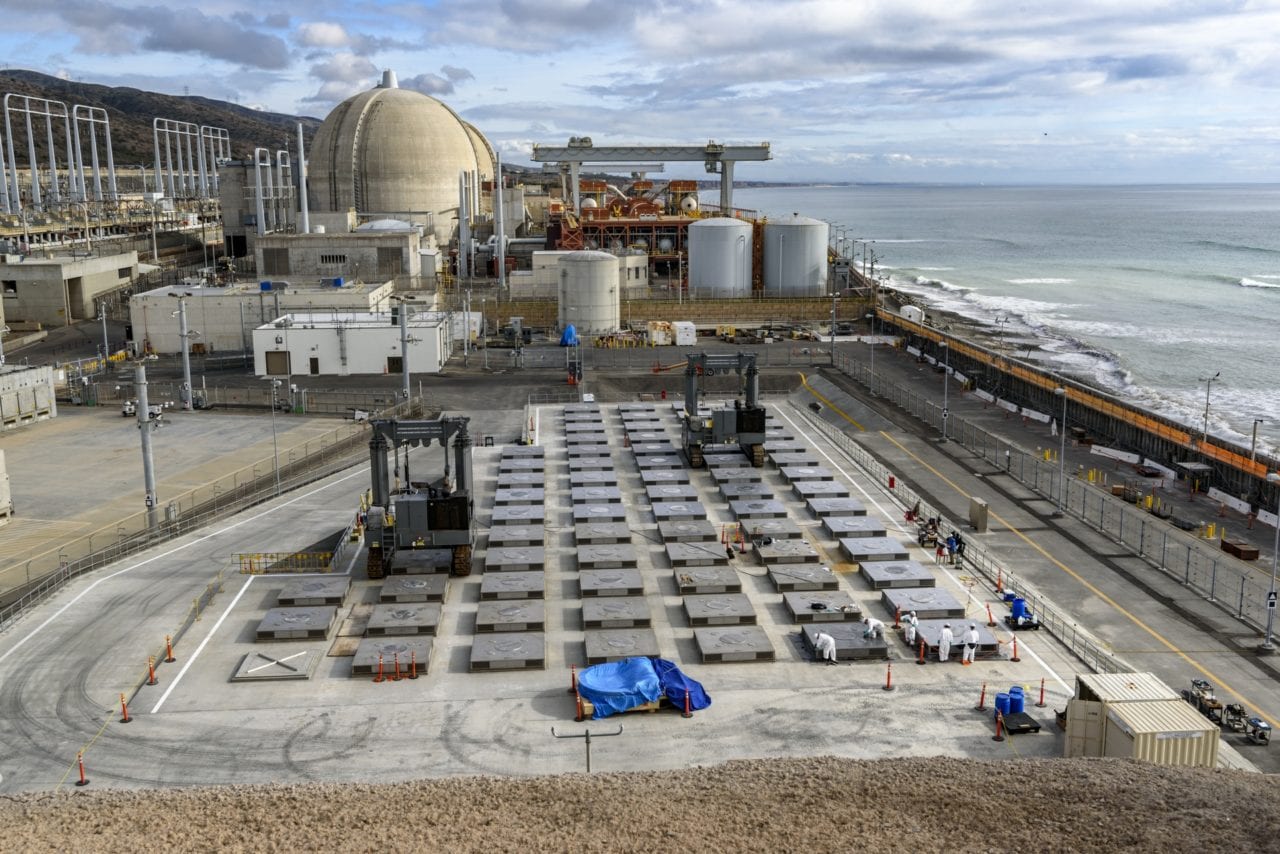
Decommissioning of the two standing reactors at the shuttered San Onofre Nuclear Generating Station (SONGS) will produce “significant and unavoidable” environmental affects, even with mitigation measures, the California State Lands Commission said Monday in its final environmental impact report (EIR) on the upcoming project.
The finding is in line with the draft version of the document issued last June. The report is a key step in securing a coastal development permit from the California Coastal Commission, which is necessary for decommissioning operations involving ground-disturbing activites to begin at the facility alongside the Pacific Ocean.
The Lands Commission is scheduled to discuss the EIR on March 21, which is the earliest date the body could adopt the report. Southern California Edison can submit its application for a coastal development permit after the Lands Commission takes action. Tentatively, the Coastal Commission is likely to hold a public hearing on the permit this summer, said spokeswoman Noaki Schwartz.
SONGS permanently closed in 2013 following installation of faulty steam generators in its two operational reactors. SONGS Decommissioning Solutions, a partnership of AECOM and EnergySolutions, plans to conduct decommissioning from 2019 to 2028 on behalf of plant owners Southern California Edison, San Diego Gas & Electric, and the city of Riverside.
The work would cover decontamination, dismantlement, and extraction of a number of above- and below-ground facilities, including the reactor structures; hauling away the debris; and gradually removing all the offshore structures such as intake and discharge conduits. Decommissioning of reactor Units 2 and 3 has been estimated to cost $4.4 billion.
The EIR does not address costs estimates and assumes most of the decommissioning, including partly removing intake and discharge conduits in the ocean, would be completed by 2028. The report assumes the spent fuel dry storage site would be active until 2035. After the spent fuel is removed, the EIR notes the remaining work would include removing riprap and walkways from the shoreline, finishing the work on the intake and discharge conduits in the ocean, and covering some exposed areas.
“The Proposed Project would generate significant environmental impacts associated with hazardous and radiological materials, air quality, biological resources, cultural resources, Tribal cultural resources, hydrology and water quality, recreation and public access, and transportation and traffic,” the final EIR says. “With the implementation of Applicant Proposed Measures (APMs) and mitigation measures (MMs) identified in this EIR … most impacts would be reduced to Less than Significant. However, several impacts related to air quality and radiological materials would remain Significant and Unavoidable, even after the application of feasible MMs.
The report addresses anticipated environmental impacts and mitigation measures in 14 areas, including: hazardous and radiological materials, air quality, biological resources, cultural and paleontological resources, and hydrology and water quality.
The significant and unavoidable impacts related to hazardous and radiological materials, according to the report, are: release of hazardous radioactive materials during decommissioning and disposal, which could be mitigated by a waste management program, dust suppression, and other measures; the need for additional emergency response resources, for which there is no recommended mitigation; and exposure to radioactive groundwater contamination, which also has no recommended mitigation measures.
Staff or contractors at the State Lands Commission will monitor mitigation measures as work proceeds, the agency said.
The planned decommissioning approach is environmentally superior to all alternatives other than not doing the work at all, according to the EIR. The other alternatives included not tackling or only partly tackling offshore structures such as intake and discharge conduits, and not dealing with all of the underground structures.
The final environmental impact report makes additions and subtractions from the earlier version, including adding a description of an August mishap in loading a spent fuel canister into the on-site dry storage pad. The transfer of used fuel from reactor Units 2 and 3 has been suspended since the loading incident, in which the canister was at risk of being dropped nearly 20 feet. The EIR also cites the discovery of a loose shim in a fuel canister from contractor Holtec International. The Nuclear Regulatory Commission is investigating both incidents, with enforcement decisions expected soon.
Reactor Unit 1 at SONGS was retired in 1992 and subsequently largely decommissioned. SONGS Decommissioning Solutions, under its $1 billion award as general contractor for decommissioning, has already wrapped up the first of three phases of work: assuming management of 21 plant systems at the plant, including safety, engineering, and radiation control and protection.